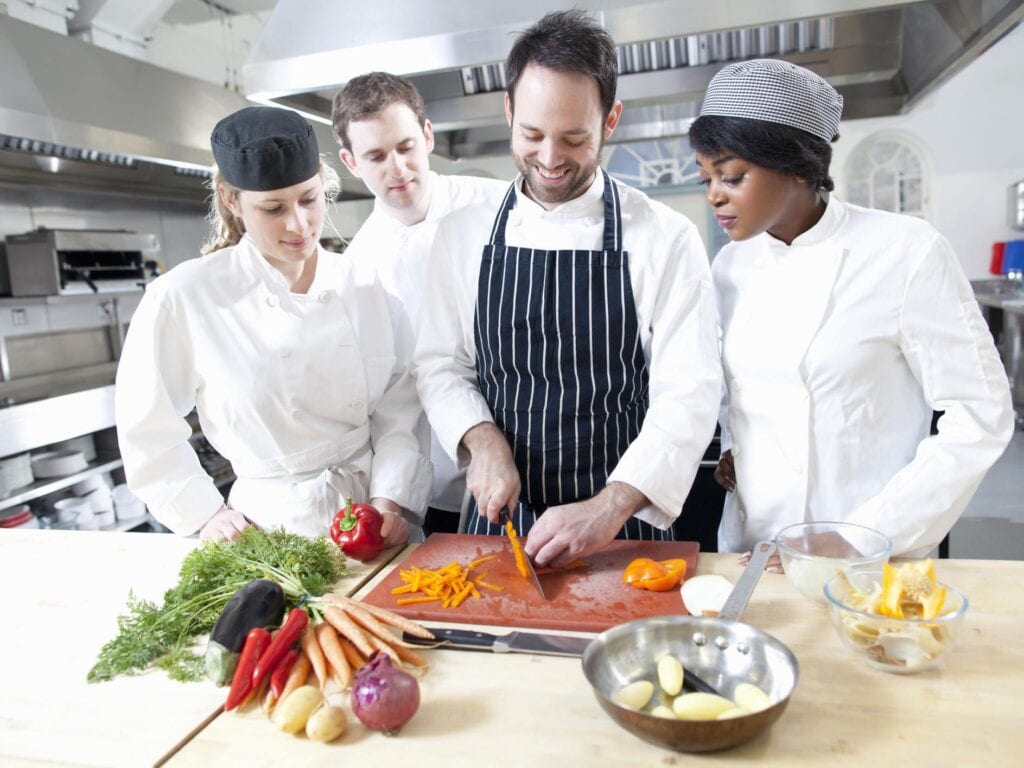
There’s no person in the world who doesn’t enjoy having a healthy and tasty dish. However, not all people are capable of making this kind of food. Certainly, some have this talent and don’t require any education in this field. However, some persons require some education before they can achieve their full potential as chefs.
In most cases, the term “baking school” is a term that serves as some kind of umbrella for a wide array of different ways of preparing food. It can be said that the main two categories in this field are baking and pastry. The sentence that says they are two sides of the same coin can be heard pretty often. We can completely agree with it, of course. However, they require a completely different set of skills.
Thankfully, some schools and courses can help you achieve the proper level of skills needed for these two fields. Strangely enough, we can see that there are people who are not sure about what’s behind the term pastry school. In case you are interested in learning the basic concept, be sure to take a look at Culinary Lab Schools. Now, we would like to discuss the main differences between pastry and culinary schools. Without any ado, let’s get started.
1. They Provide Different Techniques

When talking about the biggest differences between culinary and pastry schools, the most important is certainly the set of skills they will provide you with. We will start with the ones provided by culinary schools. The person who finished this kind of school is considered a chef. Sure, the majority of our readers know what a chef does. He or she is responsible for main courses and appetizers. Now, we would like to discuss the set of skills needed.
The first one we would like to mention seasoning. Every experienced chef knows that adding intense or light flavors to their dishes is crucial. To do that, they need to obtain certain herbs and spices. Their availability solely depends on the season these grow, right? The next one we would like to mention is plating. It doesn’t matter how delicious the dish is, if it is not arranged in the best way possible, lucrative restaurants will not consider hiring a chef in question.
After we’ve learned all about the skills techniques needed for a chef, now we would like to talk about those that can be obtained at pastry schools. Since you are making pastries, you certainly need to know how to prepare pans. That way, you will avoid the food sticking to it. Furthermore, many pastries are made with chocolate.
Therefore, you will certainly need to learn how you can melt it in the best possible way. Maybe it sounds easy but believes us, it’s not.
Sugar is a crucial ingredient for a lot of pastries, and you will certainly need to learn how to beat sugar and butter together. Once again, we would like to say that this sounds pretty simple. However, it is much more complex than it meets the eye. Next, add a nice color to the pastry can be done by making a zest from limes or lemons. The trick is that the zest doesn’t have a too strong taste. So, you will need to be extra careful when making these.
2. Culinary Schools Have More Extensive Training

When you take a look at both of these concepts, you will certainly see that culinary school’s training is certainly much more extensive than those provided by pastry schools. The reason is pretty obvious, there are much more dishes you will need to learn about than the number of pastries. You can see this clear difference, right? Naturally, there are countless pastries from all over the world, that come from different cultures, but there are more dishes that involve meat and vegetable, without bread.
Therefore, you will certainly need to go through many more of these than pastries. At the same time, it can be said that all the pastries in the world are certainly similar. Of course, there are differences, in size, taste, ingredients, etc. But it needs to be said that once you’ve mastered all the techniques and you know how to make just one of these, making all other pastries will be much easier in the future. So, you can imagine why this training is not as extensive as those at culinary schools.
3. Culinary Schools Offer More Levels of Education

Since culinary schools have more extensive training, it is safe to presume that they can provide students with more levels of education than pastry schools. Of course, they depend on the level you already have. The first level is a certificate. Most of the time, it takes less than a year to complete. We are talking about an entry-level certificate that will provide students with a chance to start their careers as chefs. The next one is an associate’s degree.
It means that the student has managed to complete two years of education. Of course, this level of education requires knowledge about making dishes from many different cultures and handling ingredients like seafood, which often requires specific conditions. The next one we would like to talk about is a bachelor’s degree. Obtaining one of these provides people with a chance to become managers at a restaurant or a hotel.
It doesn’t only require you to know how to prepare a certain food. Also, you will learn how to communicate with members of your team, how to manage the team properly, and understanding the analysis of costs and budget. We are talking about an administrative position. Surely, the person in this position needs to know more than other members of the team.
Last but not least, we would like to talk about a master’s degree. We are talking about a level of education that only high-level chefs have. When talking about pastry schools, we can say that there’s the only level of education. The only difference is made when someone has the ambition to become a chef and is required to achieve new levels of education.
The Bottom Line
Since the concepts of culinary and pastry schools are pretty similar, many people have problems understanding what they actually mean. Therefore, we felt it is important to provide our readers with three main differences between these two. We hope that they will help you to have a better understanding of those.




